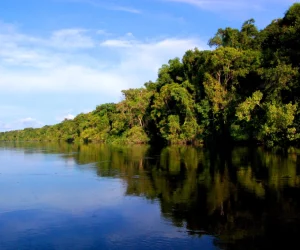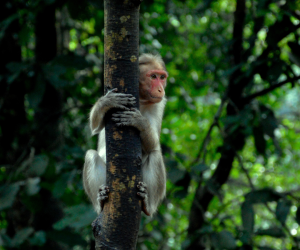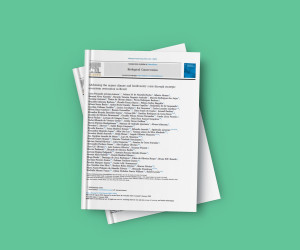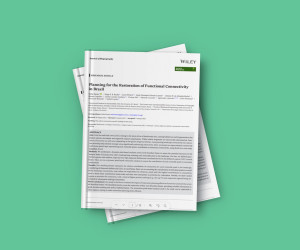Publications > Article
Conservation Letters: Associations between socio-environmental factors and landscape-scale biodiversity recovery in naturally regenerating tropical and subtropical forests
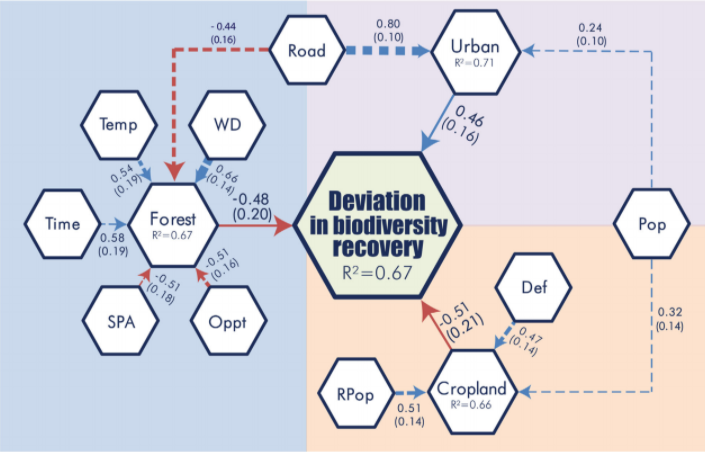
Natural regeneration is key for large-scale forest restoration, yet it may lead to different biodiversity outcomes depending on socio-environmental context.
We combined the results of a global meta-analysis to quantify how biodiversity recovery in naturally regenerating forests deviates from biodiversity values in reference old-growth forests, with structural equation modelling, to identify direct and indirect associations between socioeconomic, biophysical and ecological factors and deviation in biodiversity recovery at a landscape scale. Low deviation within a landscape means higher chances of multiple sites in naturally regenerating forests successfully recovering biodiversity compared to reference forests. Deviation in biodiversity recovery was directly negatively associated with the percentage of cropland, forest cover, and positively associated with the percentage of urban areas in the surrounding landscape. These three factors mediated the indirect associations with rural population size, recent gross deforestation, time since natural regeneration started, mean annual temperature, mean annual water deficit, road density, land opportunity cost, percentage cover of strictly protected forest areas, and human population variation in the surrounding landscape.We suggest that natural forest restoration should be prioritized in landscapes with both low socioeconomic pressures on land use conversion to pasturelands and urban areas, and high percentage of forest cover.

